Most 1968 dimes are worth face value (10 cents), but rare error coins can be extremely valuable. The 1968 “No S” proof dime, missing its San Francisco mint mark, is worth thousands of dollars. Other valuable errors include 1968-D repunched mint marks (worth over $50), and double die varieties on both obverse and reverse. Regular 1968 dimes with no mint mark (Philadelphia), “D” (Denver), or “S” (San Francisco proof) are typically worth only ten cents unless they contain errors. To identify valuable pieces, check for missing or doubled mint marks, doubled lettering on “Liberty” or “In God We Trust,” and the mirror-like finish characteristic of proof coins, often found in collector proof sets.
That 1968 dime sitting in your change jar could be worth far more than ten cents. While most Roosevelt dimes from this year carry only face value, specific mint errors and varieties have sold for thousands of dollars at auction. The legendary 1968 No S proof dime, missing its San Francisco mint mark entirely, represents one of the most sought-after modern coin errors among collectors. Understanding which varieties to look for can transform pocket change into serious profit.
Standard 1968 Dime Production and Values
The United States Mint produced Roosevelt dimes at three facilities in 1968, with total mintage exceeding 700 million coins. Philadelphia struck 424,470,400 dimes without a mint mark, while Denver produced 480,748,280 pieces bearing the D designation. San Francisco focused exclusively on proof coins for collectors, creating approximately 3.04 million examples with the S mint mark.
Regular circulation strikes from Philadelphia and Denver hold no premium in worn condition. These coins contain a copper-nickel clad composition introduced in 1965 when the Mint eliminated silver from dime production. Even in uncirculated grades below MS-65, these standard pieces rarely command more than $2 to $5 from dealers.
The 1968-S proof dimes present a different situation. Struck on specially prepared planchets with polished dies, these coins display mirror-like fields and frosted design elements. Standard 1968-S proofs in original packaging typically sell for $3 to $8, depending on condition and market demand. Professional grading at PR-69 or PR-70 levels can push values toward $25 to $45, according to recent Heritage Auctions data.
The Legendary 1968 No S Proof Dime
Among modern mint errors, few command the respect and value of the 1968 No S proof dime. This remarkable variety occurred when San Francisco Mint workers failed to hand-punch the S mint mark into working dies before striking proof coins. The error went undetected until collectors began examining their proof sets, discovering dimes that appeared identical to Philadelphia strikes but possessed the superior quality of proof production.
Fewer than two dozen examples have been confirmed to exist, making this one of the rarest post-1964 mint errors. The scarcity stems from the proof set format itself. Most collectors who purchased 1968 proof sets never bothered examining individual coins closely, leaving these treasures undiscovered for decades. Some sets remain sealed in original packaging, potentially containing undiscovered examples.
Current market values reflect this extreme rarity. Recent auction results demonstrate the premium these coins command:
| Grade | Auction Price | Year |
|---|---|---|
| PR-65 | $18,800 | Heritage Auctions 2022 |
| PR-67 | $31,200 | Stack’s Bowers 2023 |
| PR-68 | $48,875 | Legend Rare Coin Auctions 2021 |
Authentication remains critical when dealing with potential 1968 No S proof dimes. The coin must exhibit proof characteristics including mirror-like surfaces, sharp strikes, and squared rims. Professional grading through PCGS or NGC provides essential verification, as counterfeiters have attempted to remove S mint marks from genuine proofs or create deceptive alterations.
1968-D Repunched Mint Mark Varieties
The Denver Mint produced several notable repunched mint mark varieties in 1968, occurring when die workers punched the D designation multiple times in slightly different positions. This manual process, used before computer-controlled systems, occasionally resulted in visible doubling or tripling of the mint mark.
The most prominent 1968-D RPM (repunched mint mark) varieties include the D/D South, where the secondary impression appears below the primary mint mark, and the D/D North, showing doubling above. These errors vary in dramatic effect, with some displaying obvious separation between impressions while others require magnification to detect.
Values for 1968-D repunched mint mark dimes depend heavily on the variety’s prominence and overall coin condition. Well-documented examples in uncirculated condition have sold for $45 to $150 through specialized error coin dealers. The most dramatic varieties, particularly those with significant separation between mint mark impressions, can exceed $200 when certified at MS-65 or higher grades.
Collectors should examine the mint mark area with at least 5x magnification, looking for doubling, notching, or multiple impressions. Comparing suspected varieties against documented examples in error coin references like the CONECA files helps confirm authenticity. Not every 1968-D dime with a slightly abnormal mint mark represents a true collectible variety—die deterioration and strike weakness can create similar appearances without adding value.
Double Die Obverse and Reverse Errors
The 1968 proof dime series includes several confirmed double die varieties affecting both obverse and reverse designs. These errors occurred during the hubbing process when working dies received multiple impressions from the master hub at slightly different angles or positions. The resulting coins display doubled design elements visible to collectors.
The 1968-S proof double die obverse variety shows most prominently on the word LIBERTY and the motto IN GOD WE TRUST. Under magnification, letters appear to have doubled outlines or notched serifs. The date numerals may also exhibit subtle doubling, though this proves harder to detect than the lettering errors. Examples certified by major grading services have sold between $125 and $450 depending on the doubling’s severity and the coin’s overall grade.
A separate 1968-S proof double die reverse variety affects the reverse lettering, particularly visible on UNITED STATES OF AMERICA and ONE DIME. The torch’s vertical lines may also show slight doubling, creating a thickened appearance. These varieties command similar premiums to obverse errors, with PR-67 examples reaching $300 to $500 at specialized auctions.
Documentation matters significantly when attributing double die varieties. The Wexler Die Variety files and CONECA (Combined Organizations of Numismatic Error Collectors of America) listings provide standardized naming conventions and diagnostic images. Coins matching these documented varieties carry premiums, while undocumented doubling receives minimal collector interest unless exceptionally dramatic.
Identifying Valuable 1968 Dimes in Your Collection
Checking your 1968 dimes for valuable varieties requires systematic examination starting with proper lighting and magnification. A jeweler’s loupe offering 10x magnification provides sufficient detail for most error detection, though a stereoscopic microscope reveals finer details for advanced collectors.
Begin by determining whether you have a circulation strike or proof coin. Proof dimes display mirror-like surfaces on both obverse and reverse fields, with design elements appearing frosted or cameo against the reflective background. These coins came exclusively in proof sets sold directly to collectors, never released into general circulation. If you possess a proof dime, examine the reverse carefully below the torch stem for the S mint mark.
For circulation strikes, identify the mint mark location on the obverse just above the date. No mint mark indicates Philadelphia production, while D signifies Denver. Use strong magnification to examine the D for any evidence of repunching—look for notches, doubling, or secondary impressions in any direction from the primary mint mark.
Next, examine all lettering on both sides under magnification. Double die varieties show as doubled outlines on letters, particularly noticeable on words with straight lines like LIBERTY and UNITED. Compare your coin against confirmed variety images online before claiming discovery of a valuable error.
Professional authentication through PCGS, NGC, or ANACS provides definitive verification for suspected valuable varieties. The grading fee typically costs $20 to $50 depending on service level, worthwhile insurance for coins potentially worth hundreds or thousands of dollars. These services encapsulate authenticated varieties in tamper-evident holders with detailed attribution labels.
Where to Buy and Sell Valuable 1968 Dimes
Collectors seeking to acquire 1968 dime varieties should explore multiple market channels. Major auction houses like Heritage, Stack’s Bowers, and Legend handle significant error coins, though typically requiring consignment values exceeding $500. Their online platforms provide bidding access and detailed lot photography for remote buyers.
Online marketplaces including eBay host thousands of 1968 dime listings, ranging from common circulation strikes to authenticated rare varieties. Exercise caution when purchasing raw (uncertified) coins advertised as valuable errors. Request high-resolution images of both sides plus the edge, and verify seller ratings and return policies before committing funds.
Specialized error coin dealers maintain expertise in attributing and pricing varieties. CONECA maintains a dealer directory, while the Professional Numismatists Guild offers member verification. These professionals can authenticate varieties, provide market value assessments, and connect sellers with serious collectors seeking specific errors.
For selling valuable discoveries, professional certification proves essential for maximizing returns. A raw 1968 No S proof dime might sell for 30-50% of certified value due to authenticity concerns. The certification investment pays dividends through buyer confidence and access to premium market channels.
Local coin shops provide convenient selling options for modestly valuable varieties, though expect wholesale offers typically 40-60% of retail values. Shop owners must maintain profit margins and may lack specialized knowledge of minor varieties. Obtain multiple quotes before accepting offers, and consider consignment arrangements for pieces valued above $200.
Protecting and Preserving Your Valuable Finds
Proper storage protects valuable 1968 dimes from environmental damage that destroys collector premiums. Never clean coins using abrasive materials, chemical solutions, or even soft cloths—cleaning creates microscopic scratches that dramatically reduce certified grades and market values. Collectors prize original surfaces showing natural toning rather than artificially brightened appearances.
Store individual coins in non-PVC holders made from inert plastics like Mylar. Standard 2×2 cardboard holders with plastic windows work well for raw coins awaiting certification. Avoid touching coin surfaces directly; handle pieces by edges only while wearing cotton gloves to prevent oil transfer from skin.
For certified coins in professional holders, additional protection comes from storage boxes designed for slabbed specimens. Keep coins in stable temperature and humidity environments away from direct sunlight. Extreme temperature fluctuations can cause holder separation or condensation damage to coins inside.
Insurance coverage becomes advisable for collections exceeding $1,000 in value. Standard homeowner’s policies typically provide limited coverage for coins, often requiring separate scheduled articles or specialized collectibles policies. Document your holdings with high-resolution photographs and maintain current market value appraisals for insurance purposes.
You may be interested:
- 1859 Indian Head Penny Coin Value Complete Errors List And No Mint Mark Worth Guide For Collectors
- 1911 V Nickel Coin Value Guide Complete Errors List And No Mint Mark Worth Today
- 1902 Dime Coin Value Complete Errors List With O S And No Mint Mark Worth Guide
- 1788 Quarter Coin Value Complete Guide Errors List And D S P Mint Mark Worth Revealed
- 1776 To 1976 Bicentennial Half Dollar Coin Value Complete Errors List And What Your D S And No Mint Mark Coins Are Actually Worth
- 1990 Penny Coin Value Errors List How D S And No Mint Mark Pennies Are Worth Thousands Of Dollars

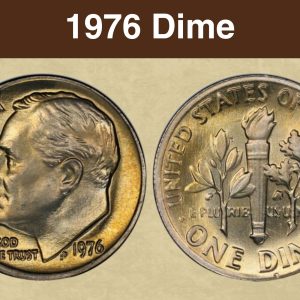
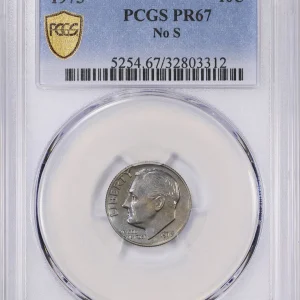
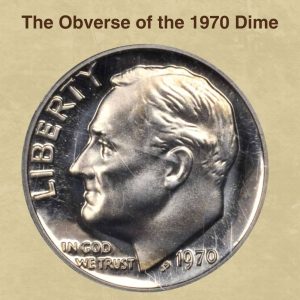
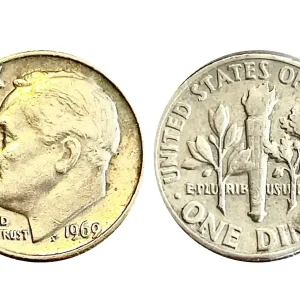
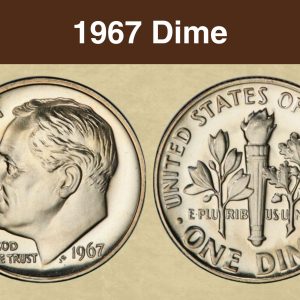
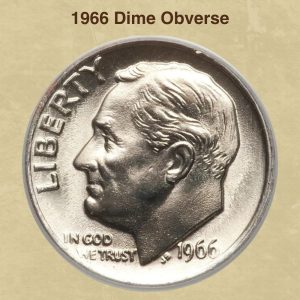
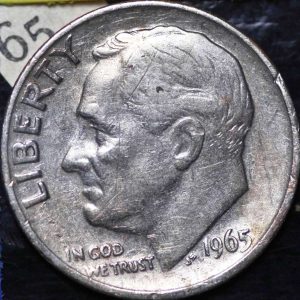
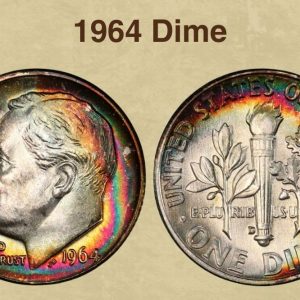
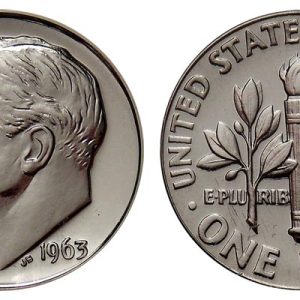
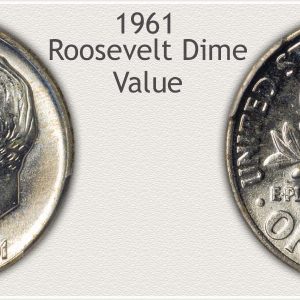
What is the error on the 1968 dime with no mint mark?
The 1968 No S Proof Dime is a modern rarity and one of the most dramatic errors the Mint has ever made. The “error” in this case is that the Mint left the mintmark off the die when it was prepared in Philadelphia before shipment to San Francisco.
How much is a 1968 No. S. dime worth?
A 1968 “no-S” dime is a rare error coin from a proof set and can be worth thousands of dollars, with a high-grade coin potentially selling for over $45,000, although this is for a specific type of proof coin that was specially ordered, not found in circulation. Most 1968 dimes are not proof coins, and a standard 1968 dime with a Philadelphia mint mark is worth its face value, but a proof dime should have an “S” mint mark; if it is missing, that’s the error that makes it so valuable.
What errors to look for on dimes?
When looking for valuable dime errors, check for coins with a double die obverse, where features like the date or motto are doubled, as well as errors in the striking process, such as an off-center strike or a broadstrike where the collar is missing. Other errors include missing or clipped planchets, missing clad layers, or striking through debris like cloth (a strikethrough error ).
Which dimes with no mint mark are worth money today?
The 1968 no-S dime is a true rarity, and it is an example of one of the most dramatic Mint errors. In 1968, the Mint left the mint mark off the die when it was created in Philadelphia before being shipped to San Francisco to strike that year’s batch of dimes. These no-S dimes are extremely rare and very valuable.